INTRODUCTION
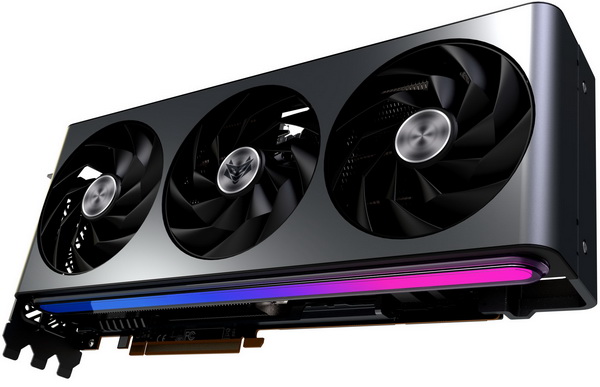
The most demanding gamers, enthusiasts and even professionals currently have 4 valid choices to choose from when it comes to graphics cards, the GeForce RTX 4080 and 4090 models by NVIDIA and the Radeon RX 7900 XT and RX 7900 XTX by AMD. Yes, both NVIDIA and AMD will be launching new even higher performance models in the near future (and they've both launched more affordable ones since (including the GeForce RTX 4060 unveiled yesterday) but for now these 4 hold the performance crown (with the GeForce RTX 4070 trailing closely behind). SAPPHIRE is clearly the leading AMD AIC (add-in-card) partner currently and since far too many of you have asked for the past month, I’ve been testing their latest and top of the line graphics card, the NITRO+ AMD Radeon RX 7900 XTX Vapor-X 24GB.
SAPPHIRE Technology continues to be a world leading manufacturer and global supplier of innovative graphics and mainboard products, delivering its AMD Radeon based products to the PC markets addressing gaming, eSports and performance graphics enthusiasts as well as delivering an array of professional graphics products and embedded system solutions. Recently SAPPHIRE has penetrated new markets with a series of GPU Compute server systems targeting the blockchain and commercial cryptocurrency mining businesses.
The AMD Radeon RX 7900 XTX is a pumped up version of the RX 7900 XT model and so it sports sports 96 RDNA 3 compute units, 6144 stream processors, 192 raster units (or render output units), 96 ray accelerators (or ray tracing cores), 384 texture mapping units, 96MB infinity cache and 6 shader engines (also 24GB of 384-bit GDDR6 VRAM). In terms of featured technologies once again we find AMD's FidelityFX Super Resolution (FSR) 2.2 for maximum performance and visuals (with FSR 2.3 and Fluid Motion Frames technology scheduled for late 2023), radiance display engine for incredible color accuracy at up to 8K 165Hz (12-bit HDR with full coverage of the REC2020 color space), image sharpening, noise suppression which helps reduce ambient noise, anti-lag for faster input commands, smart access memory (performance boost when paired with an AMD Ryzen CPU), FreeSync for no image stuttering and tearing and AMD link which allows you to stream your Windows desktop and games to mobile devices, TVs and other Windows PCs. SAPPHIRE of course has further tweaked the Radeon RX 7900 XTX and so their NITRO+ Vapor-X model comes with increased game clocks (2510Mhz from 2455MHz), three 8-pin power connectors (420W power limit compared to the 350W of the reference model), dual-RGB LED bars, dual-heatsink vapor chamber cooler with die casted aluminum-magnesium alloy frame, high density 14-layer 2oz copper & TG PCB, metal backplate, dedicated VRM cooling, dual-BIOS, composite heatpipes and three two-ball bearing quick-connect fans with angular blades. Being the flagship model by SAPPHIRE the NITRO+ AMD Radeon RX 7900 XTX Vapor-X 24GB certainly looks unique so let's move on with today's review to see how it performs.
SPECIFICATIONS AND FEATURES

PACKAGING AND CONTENTS
SAPPHIRE lists the main product features at the front of the box which is primarily taken by a sci-fi drawing.
The key features of the RX 7900 XTX are printed on the left side.
SAPPHIRE calls the entire suite of features of their NITRO+ cards the PANTHEON (obviously from the Greek Pantheon).
As expected, the card is wrapped inside a plastic bag and placed inside a formed piece of foam.
Along with the card inside the box you'll find an ARGB cable with instructions, support bracket with screws and instructions and the quick installation guide.
THE NITRO+ AMD RADEON RX 7900 XTX VAPOR-X 24GB
The NITRO+ AMD Radeon RX 7900 XTX Vapor-X 24GB is a 3.5 slot card that measures 320mm in length, 135.75mm in width and 71.6mm in height.
To showcase just how large the SAPPHIRE NITRO+ AMD Radeon RX 7900 XTX Vapor-X 24GB is i placed it next to the GAINWARD Phantom NVIDIA GeForce RTX 4080 16GB (review soon), PULS AMD Radeon RX 7900 XT 20GB again by SAPPHIRE and the stock AMD Radeon RX 7900 XT.
SAPPHIRE has placed three two-ball bearing quick-connect fans just over the dual-heatsink vapor chamber cooler.
The center fan moves clockwise whereas the left and right fans move counter-clockwise.
As you can see from the above picture the interior vapor chamber cooler also includes two large heatsinks with a total of 7 nickel plated copper heatpipes going through them.
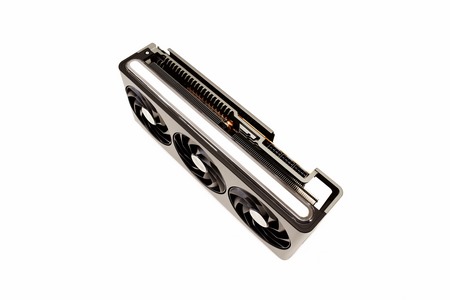
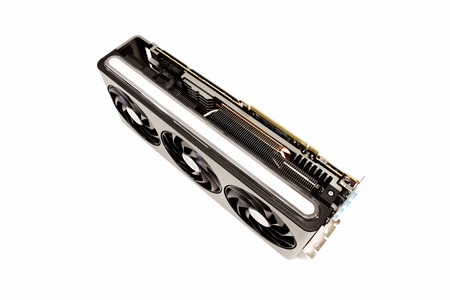 Unlike their PULSE line the NITRO+ comes with two ARGB LED bars, one up top and one at the bottom (short clip is now available on TikTok and YouTube).
Unlike their PULSE line the NITRO+ comes with two ARGB LED bars, one up top and one at the bottom (short clip is now available on TikTok and YouTube).
By using three 8-pin power connectors the NITRO+ AMD Radeon RX 7900 XTX Vapor-X 24GB has a power limit of 420W.
At the front we find the dual-BIOS switch which is set at performance by default.
In terms of available connectors SAPPHIRE has equipped their card with two HDMI v2.1 and two DP v2.1 outputs.
Most of the rear is taken by a metal plate (also notice the ARGB out and fan in pins on the left side).
TRIXX V9.0
Just like most manufacturers SAPPHIRE also have their very own monitoring/control software called TRIXX.
The first tab lists information about the card itself, including some monitoring graphs.
Second tab is a very thorough hardware monitoring tool which pretty much covers every single bit of the card you’re using.
From the 3rd tab you can further boost the performance of your card if needed at the cost of some image quality.
The fan check tab is something i consider very useful especially for such an expensive graphics card.
Last tab allows you to adjust the ARGB lighting (7 effects plus off).
TEST BED


TESTING METHODOLOGY
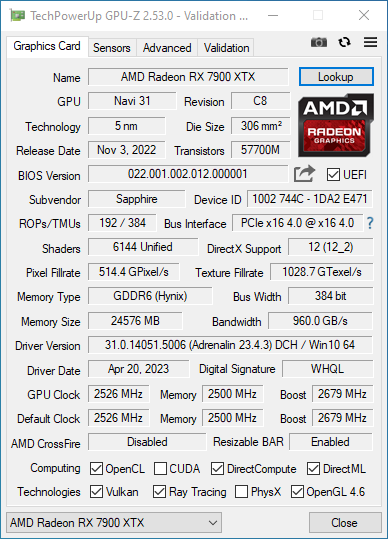
Since I changed my graphics card test rig i decided to tweak things a bit and so the entire testing methodology has changed. So, for the foreseeable future for tests, I’ll be using the EV3285 monitor by EIZO (later on i may also add tri-monitor results since i do have 2 cockpits here in the lab) for 2160p UHD (3840x2160p), 1440p (2560x1440p) and 1080p Full HD (1920x1080p) tests. Needless to say, since most of you voted for it, I’ll also be using the Intel Core I9-13900K (5.8GHz P/4.7GHz E/4.9GHz RING), EVGA Z790 DARK test rig which I’ve completed with the Kingston FURY RENEGADE 32GB DDR5 7200MHz CL38 dual-channel kit.
Most games have also been changed so instead of manually testing every single one (and always allowing a small percentage of error) i chose all the latest ones to feature a built-in benchmark. In certain cases, built-in benchmarks may perform better than in-game but my purpose is comparison and not what one can expect in terms of in-game performance. So, this list includes Chernobylite, Cyberpunk 2077, F1 2022, Far Cry 6, Forza Horizon 5, Guardians Of The Galaxy, Horizon Zero Dawn CE, Metro Exodus Enhanced Edition, Red Dead Redemption 2 and Returnal. Also, since some of you have asked for Synthetic benchmarks in the past, I’ll also be using Speed Way and Port Royal from 3D Mark.
As with the past options like power saving, sharpness and overlays are all disabled in the cards we’re testing (to achieve the purest and maximum performance) and all tests are repeated a total of 3 times in a fresh Windows 10 Pro installation with all updates installed until the day of our review (same as all the games used). Room temperature is as usual controlled and steady at 23 degrees Celsius for all tests and to record the temperatures of the cards we used AIDA64 and GPU-Z. Recording noise levels is done with an ExTech HD600 dBA meter from a distance of just 15cm away while power consumption is measured again using GPU-Z.
TEST RESULTS – SPEED WAY
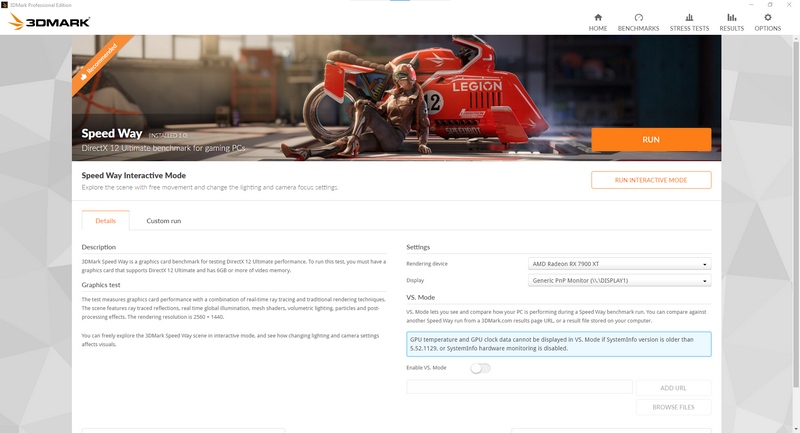
3DMark Speed Way’s engine is assembled to demonstrate what the latest DirectX API (12 Ultimate) brings to ray traced gaming, using DirectX Raytracing tier 1.1 for real-time global illumination and real-time raytraced reflections, coupled with new performance optimizations like Mesh Shaders.

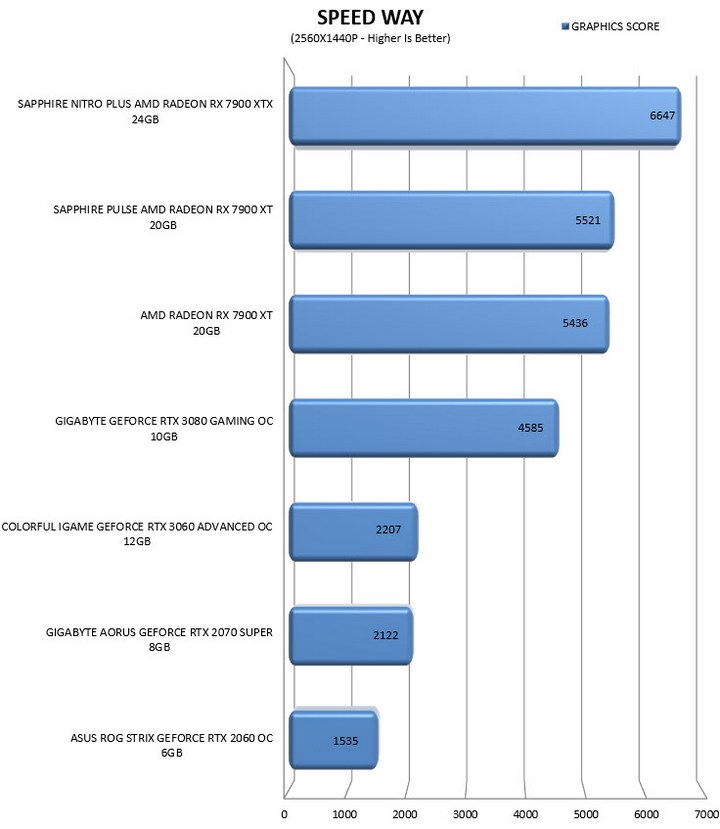

TEST RESULTS – PORT ROYAL

3DMark Port Royal is the world’s first real-time ray tracing benchmark for gamers. It shows you how well your PC handles ray tracing effects in real-time.

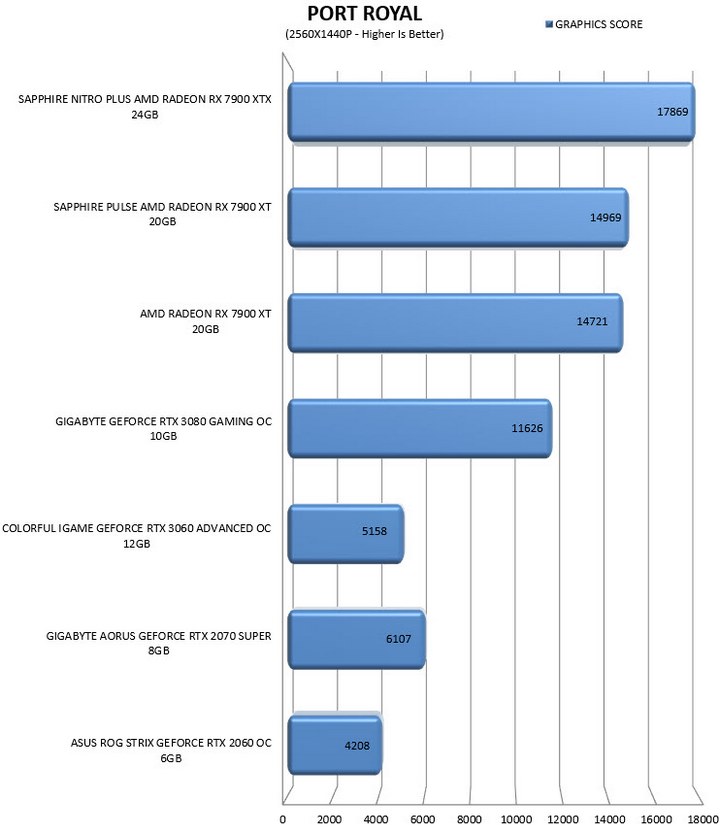

TEST RESULTS – CHERNOBYLITE

Chernobylite is a 1st person RPG set in the hyper-realistic, 3D-scanned wasteland of Chernobyl's Exclusion Zone. It's based on Unreal Engine 4 and will be used at Ultra graphics (RT Ultra/Off).

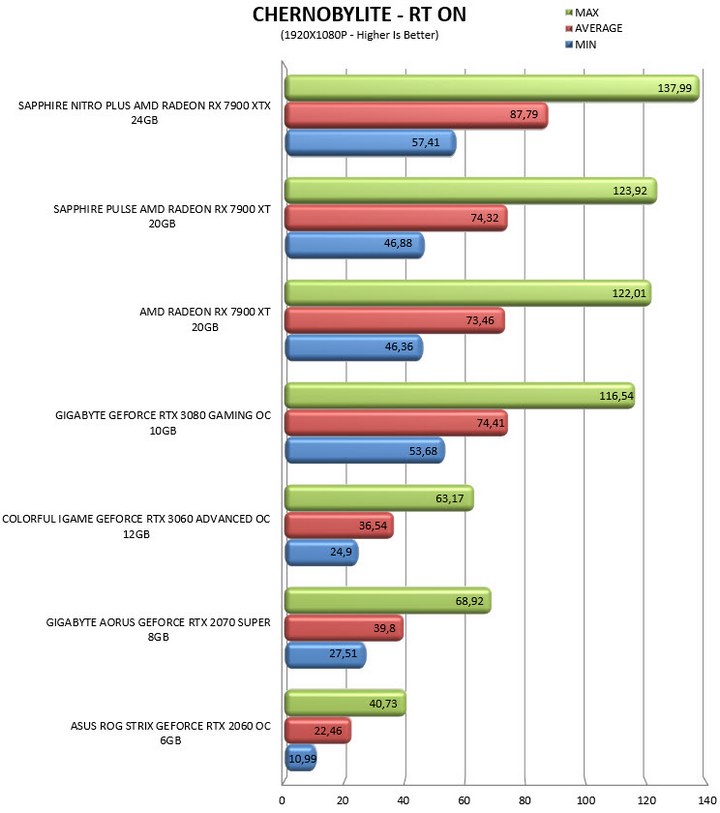




TEST RESULTS – CYBERPUNK 2077
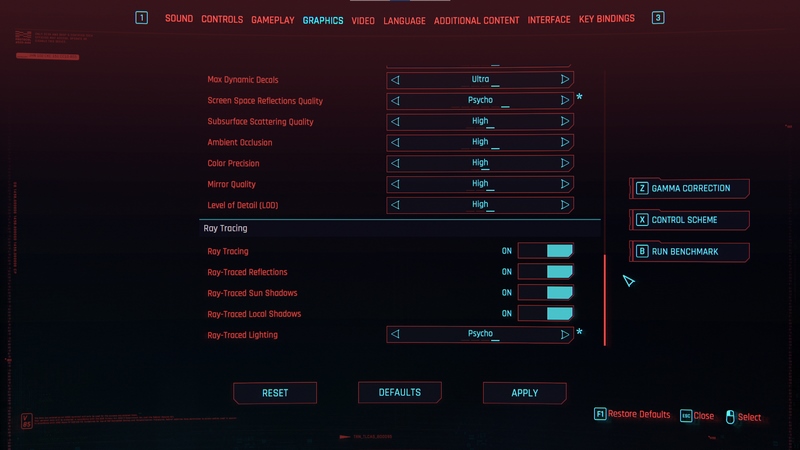
Cyberpunk 2077 is the latest game by CD Project and is based on their REDEngine 4. Graphics are set at Ultra/Psycho (RT Psycho/Off).




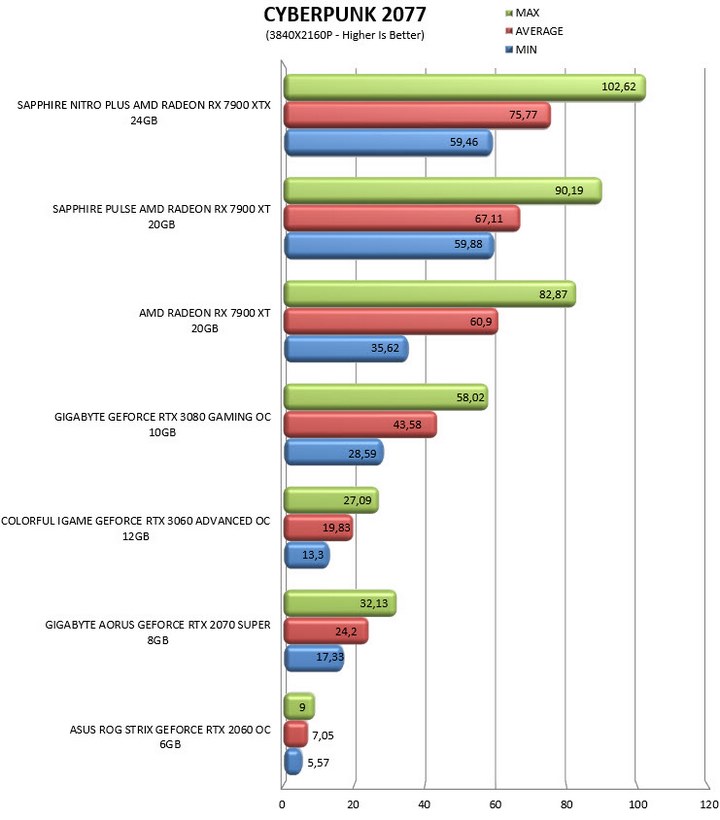

TEST RESULTS – F1 2022
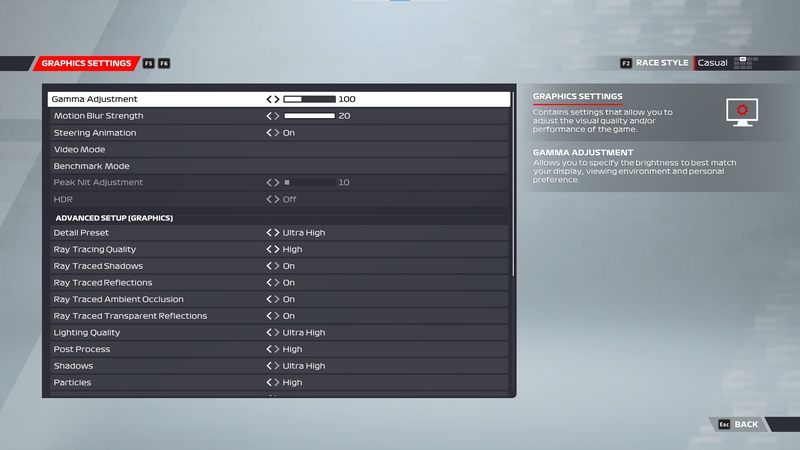
F1 2022 is built on Codemasters' in-house engine, EGO, which has been upgraded to include DX12 and Ray-Tracing. Graphics are set to Ultra High (RT is enabled in all tests).

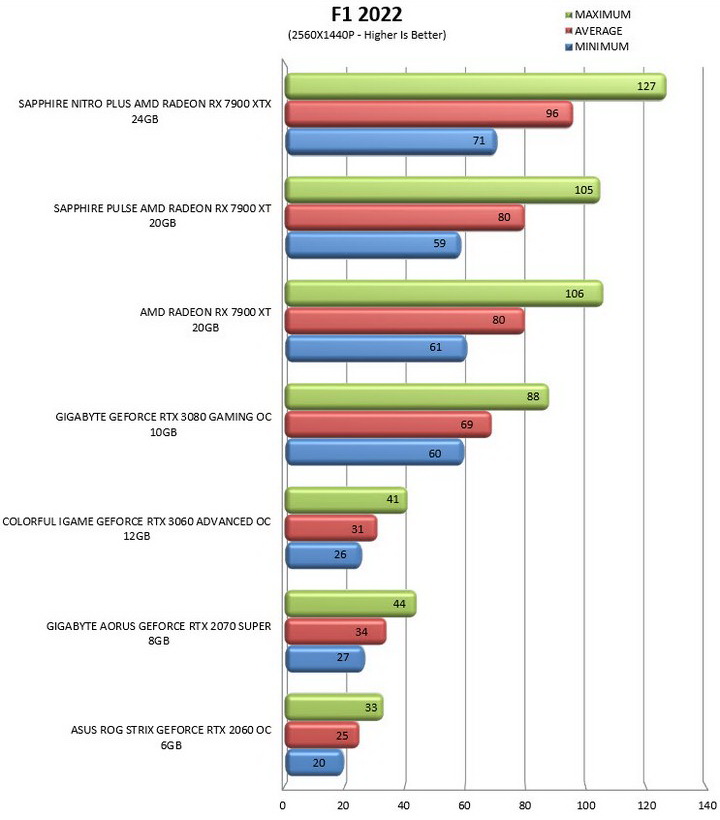
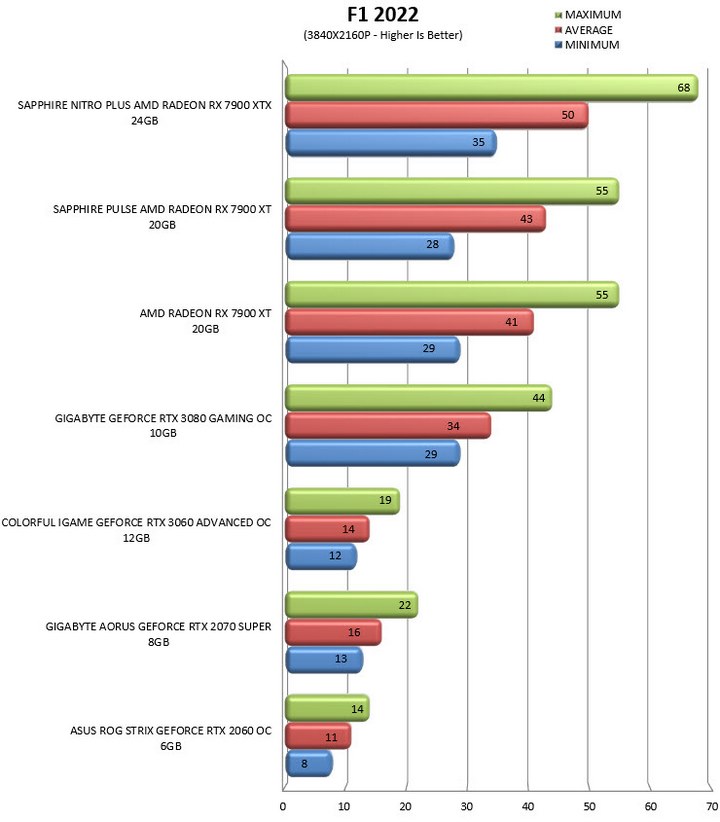
TEST RESULTS – FAR CRY 6

Far Cry 6 is based on the Dunia engine. Graphics are set to Ultra with DXR enabled.

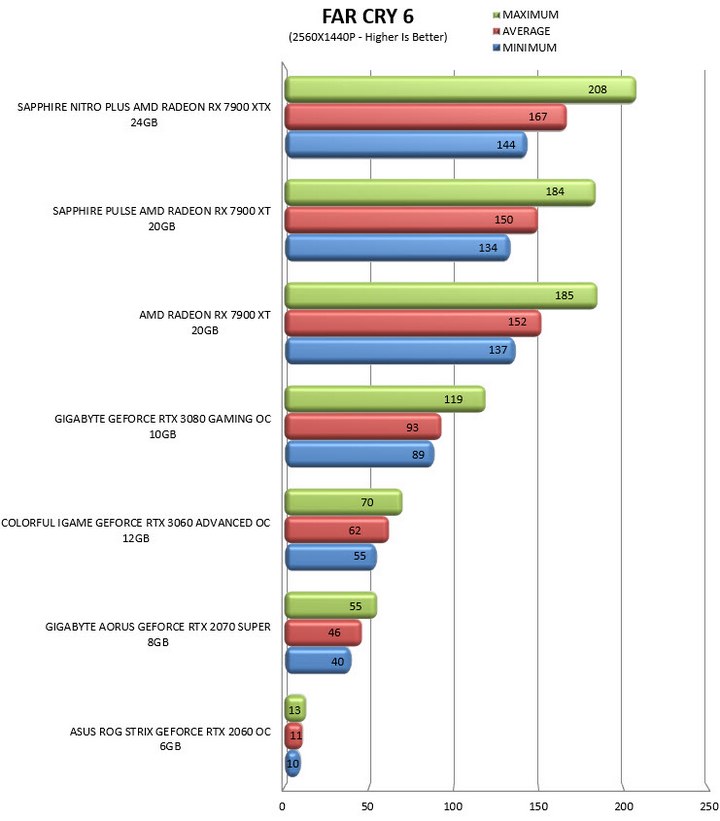
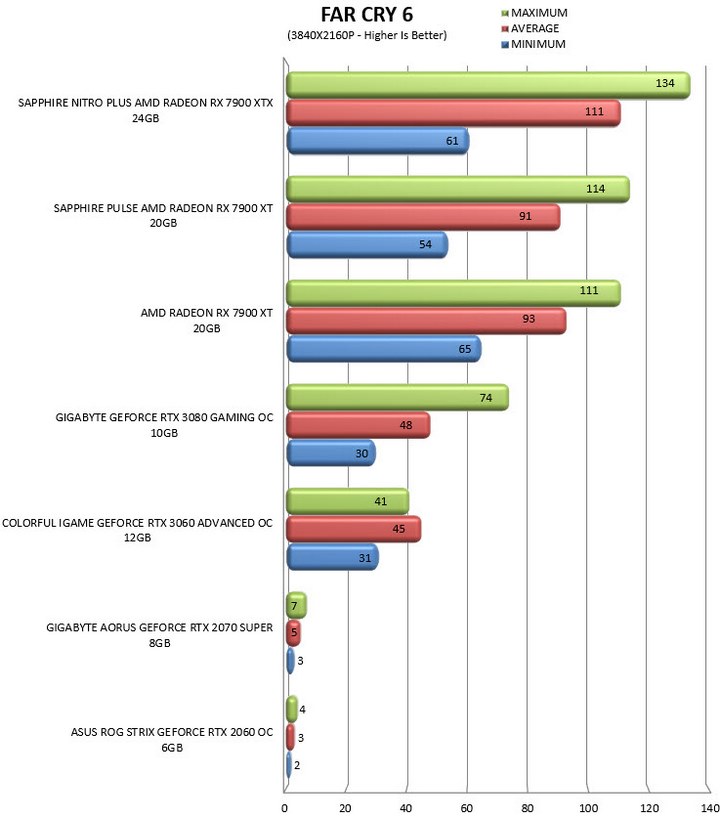
TEST RESULTS – FORZA HORIZON 5

Forza Horizon 5 uses ForzaTech, a proprietary engine built by Turn 10. Graphics are set to Extreme (RT is always enabled at high).
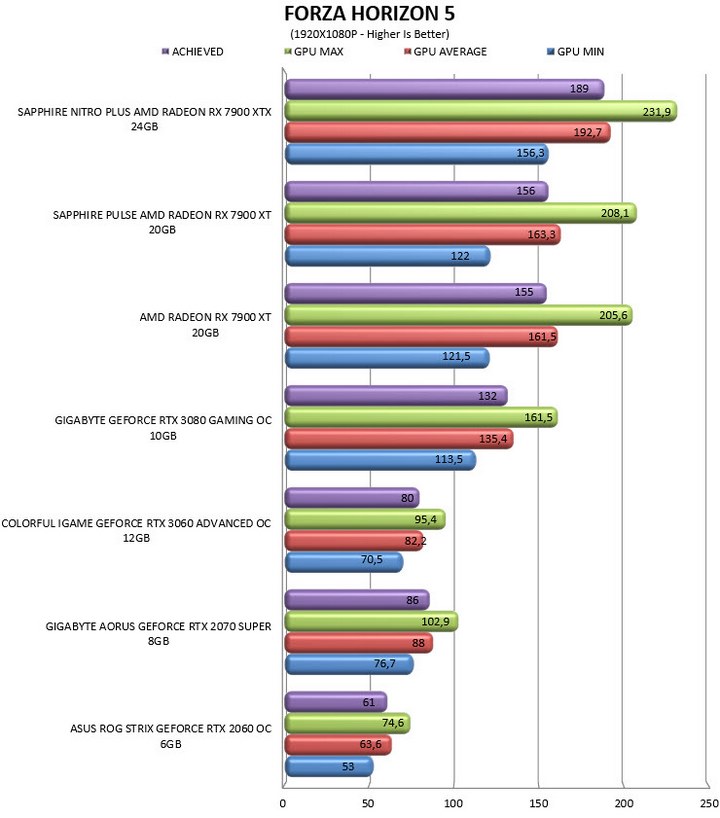


TEST RESULTS - GUARDIANS OF THE GALAXY

Guardians Of The Galaxy is based on the Dawn Engine by EIDOS. Graphics are set to maximum (RT Ultra/Off).

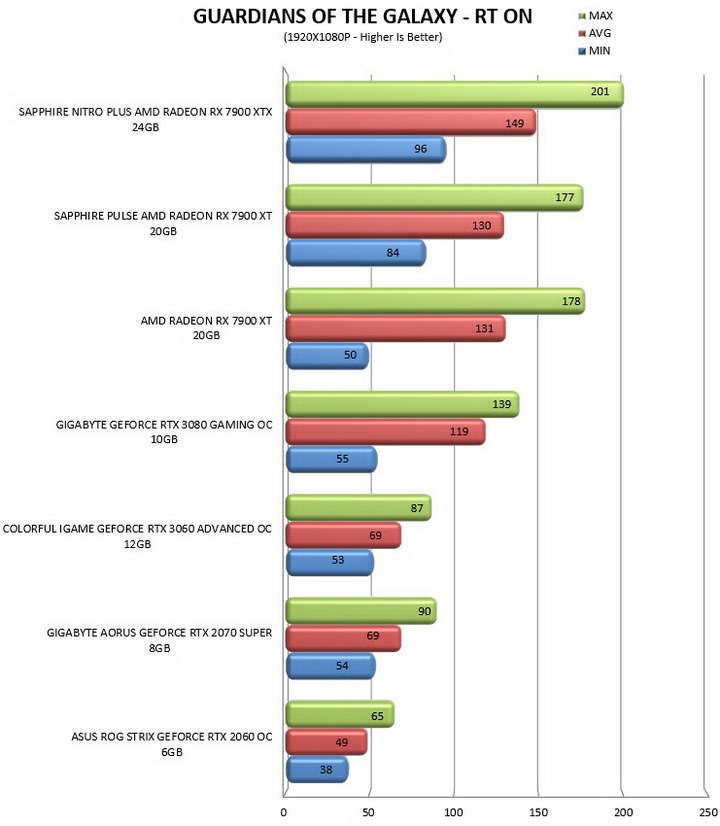
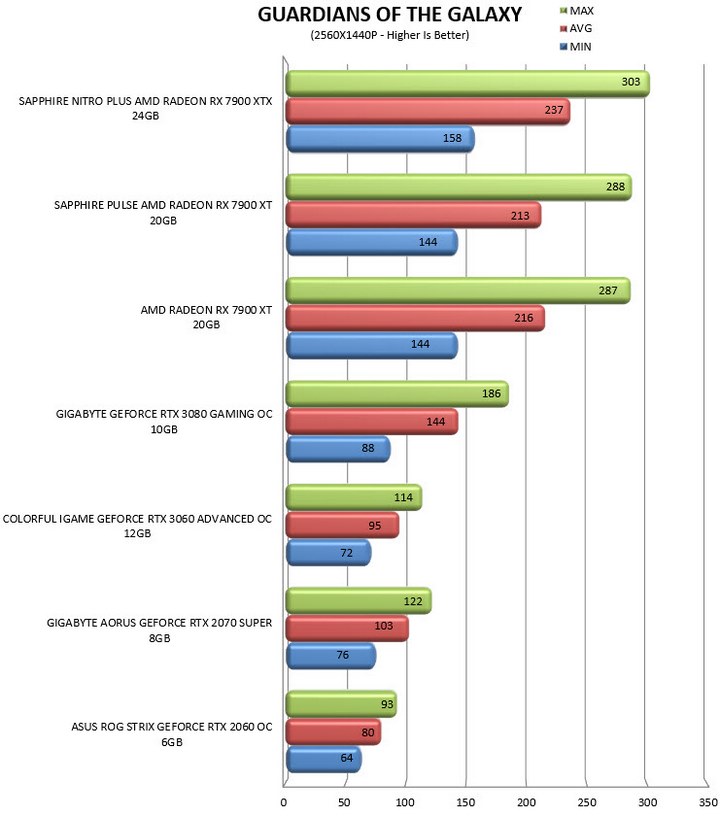



TEST RESULTS - HORIZON ZERO DAWN CE

Horizon Zero Dawn CE (Complete Edition) is based on Guerrilla Games' Decima engine. Graphics are set to Ultimate Quality.
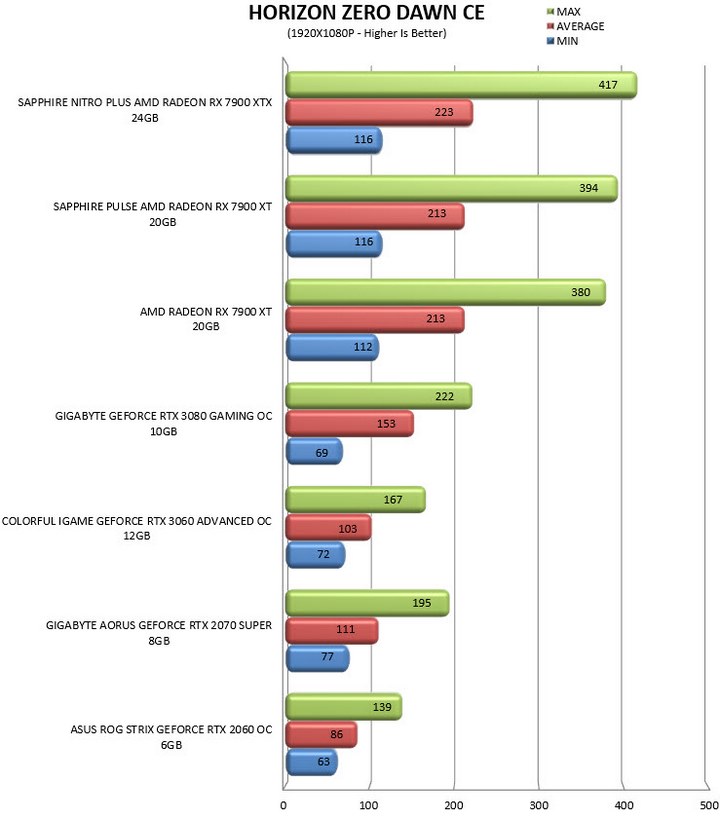
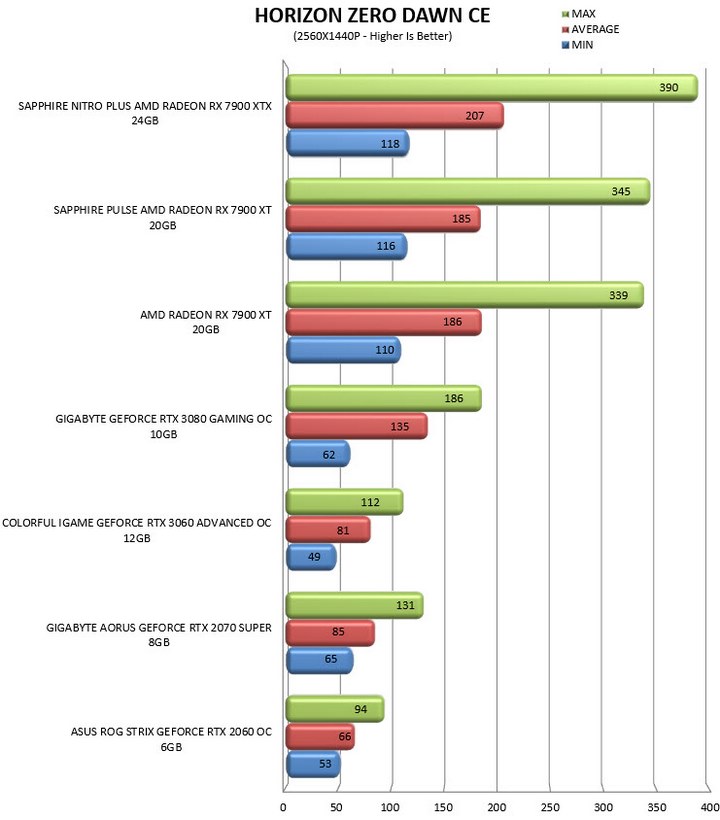

TEST RESULTS - METRO EXODUS ENHANCED EDITION
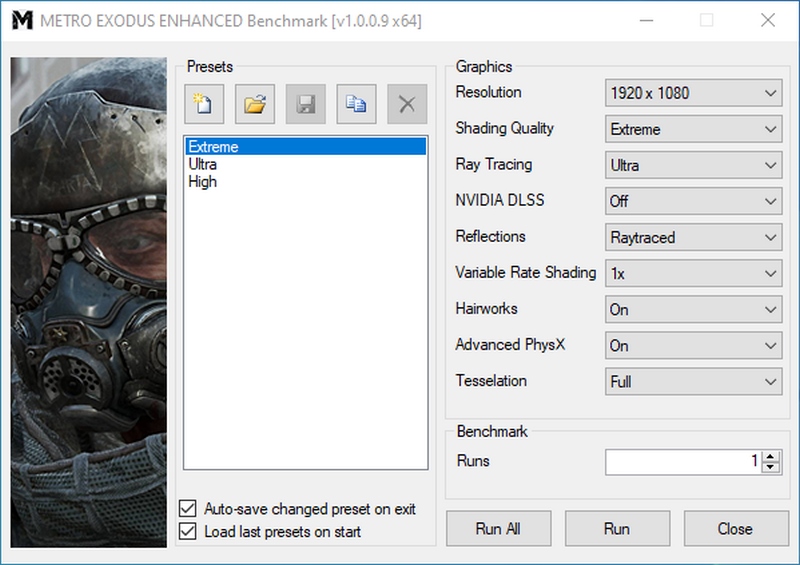
Metro Exodus Enhanced Edition is based on the 4A Engine and contains huge graphical upgrades compared to the normal version, including Ray Traced Emissive Lighting. Graphics are set at Extreme quality.
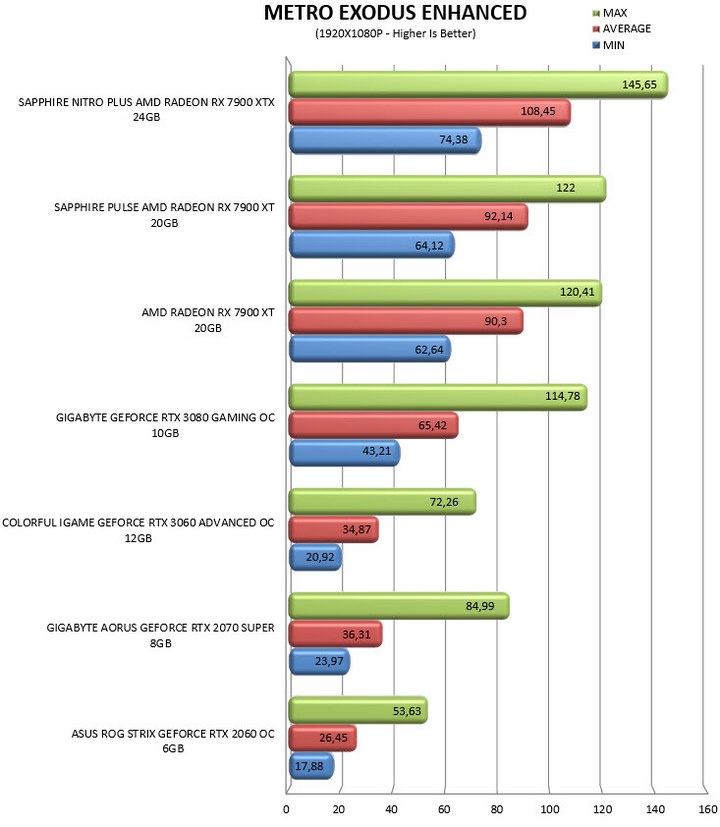
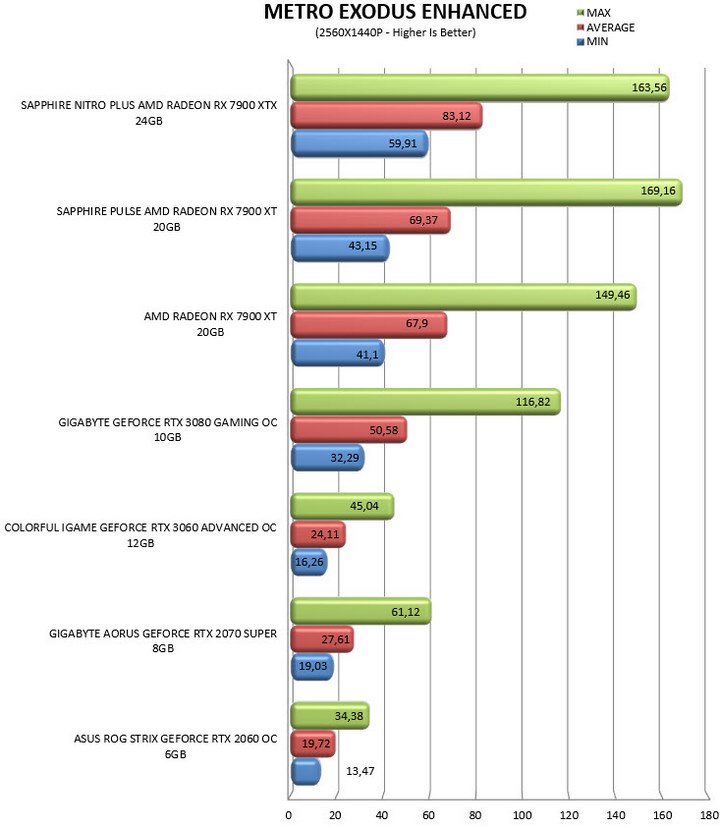

TEST RESULTS – RED DEAD REDEMPTION 2
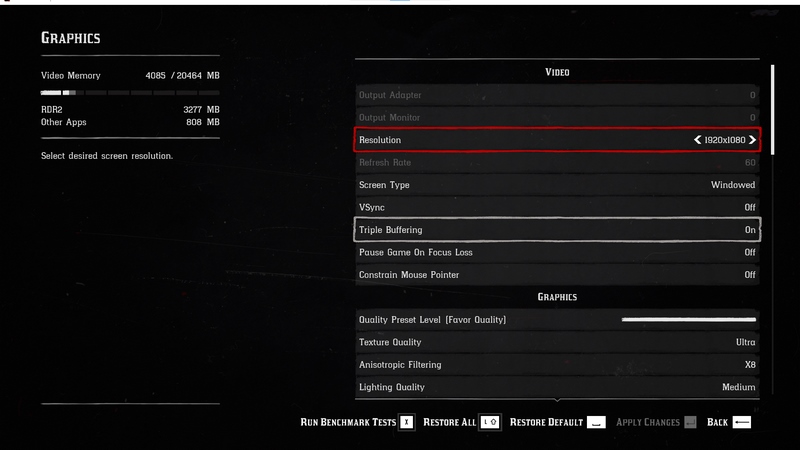
For Red Dead Redemption 2 Rockstar has used their RAGE engine (Rockstar Advanced Game Engine). Graphics preset level slider is set to favour quality.
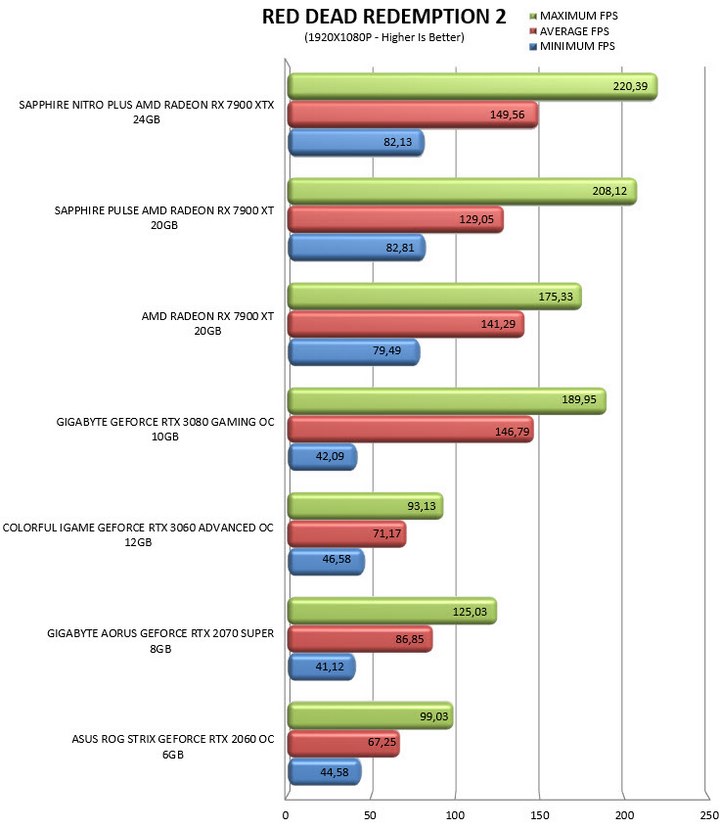

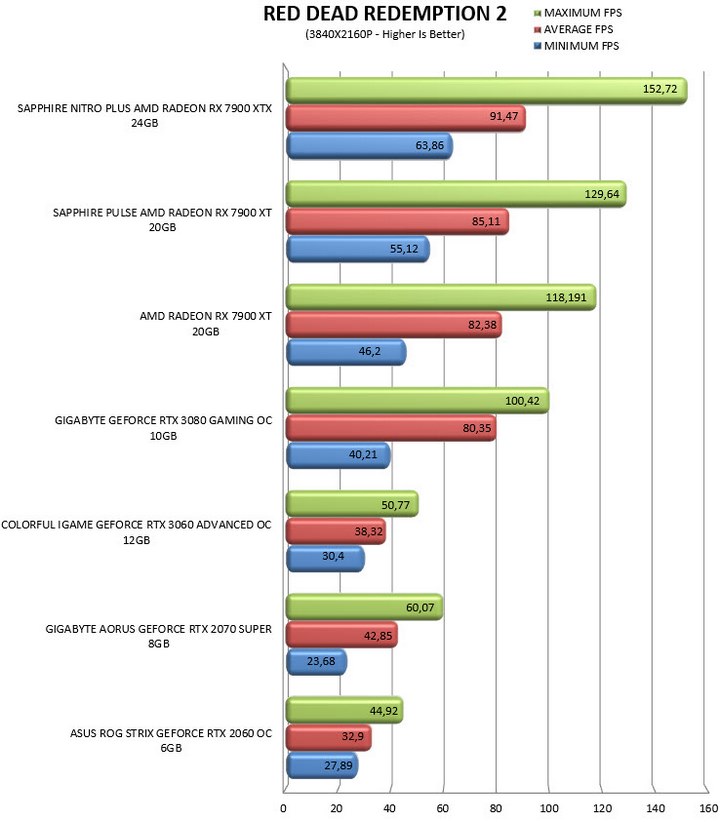
TEST RESULTS – RETURNAL
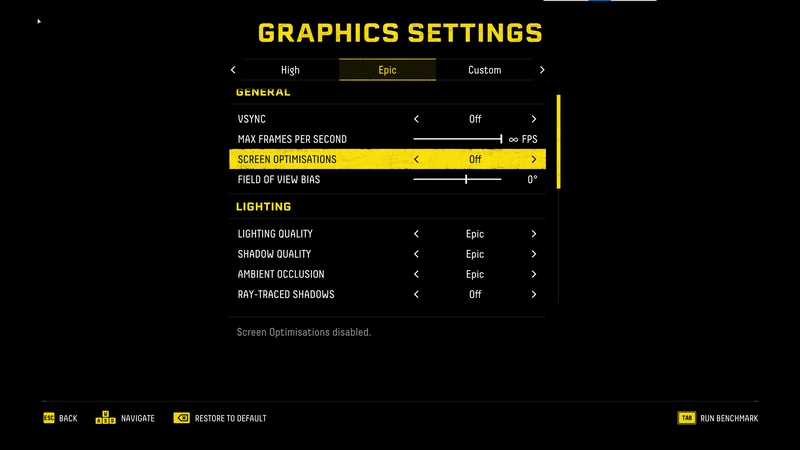
Returnal is also based on Unreal Engine 4. Graphics are set to EPIC (RT EPIC/Off).
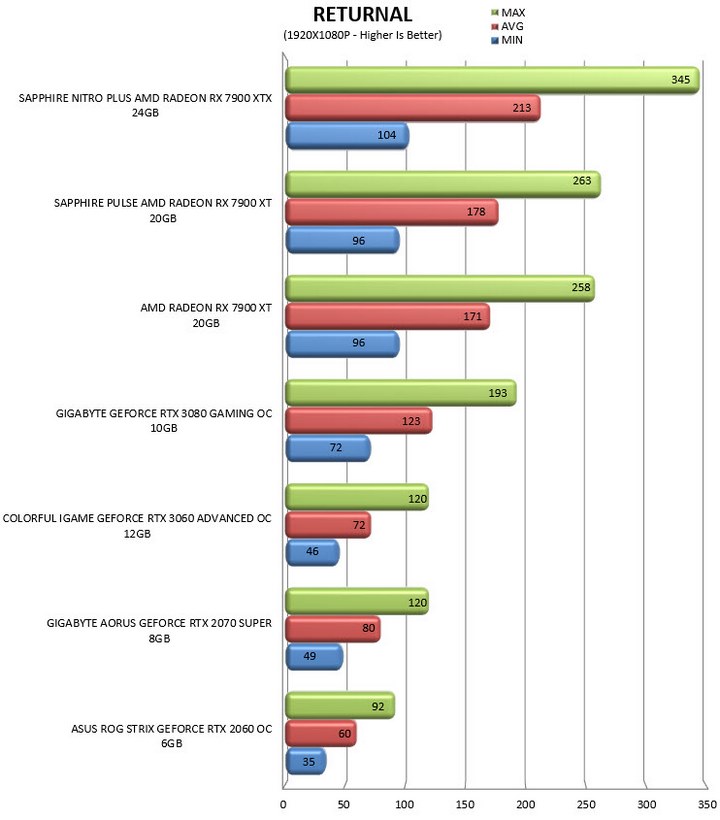
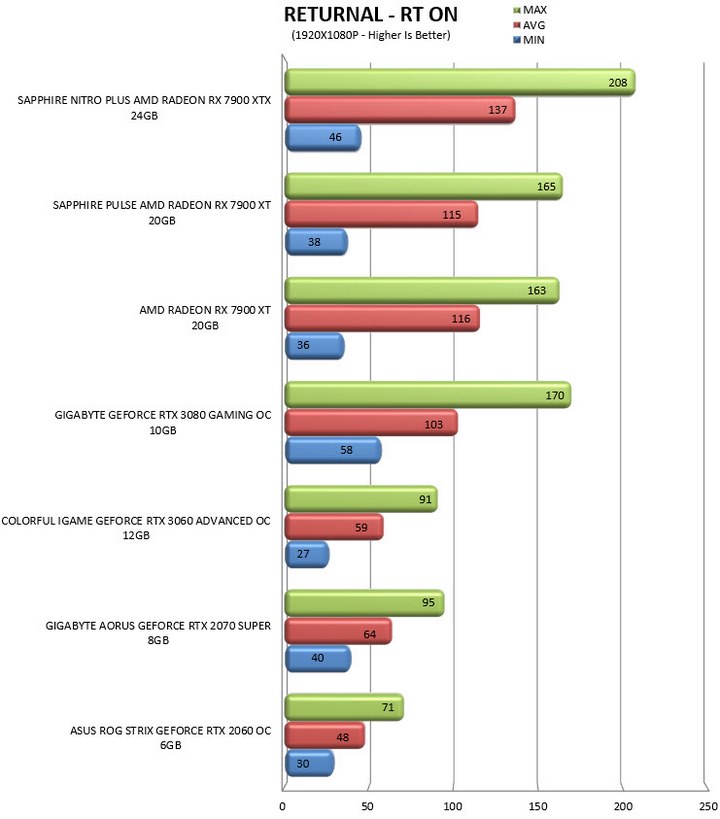
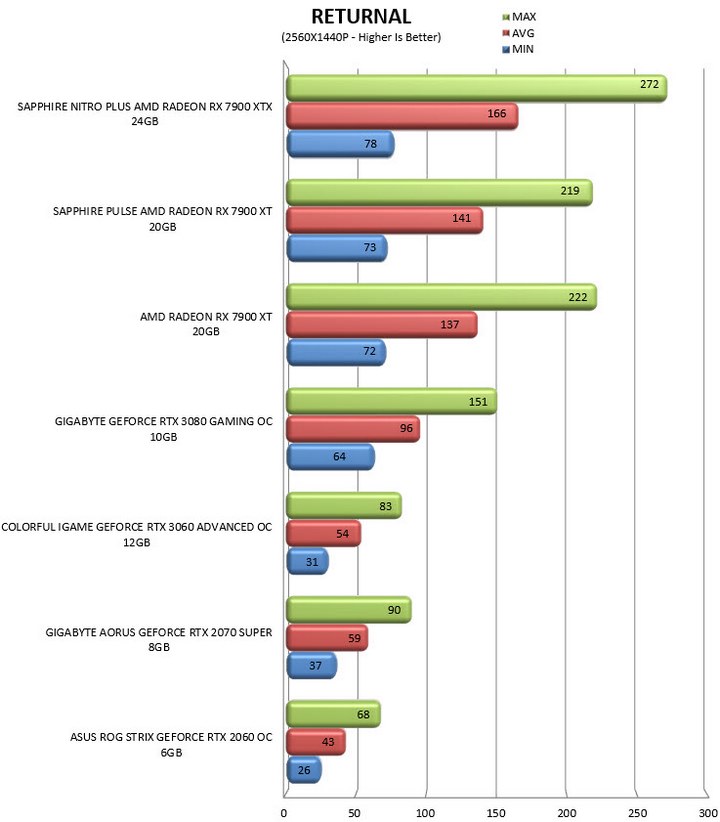

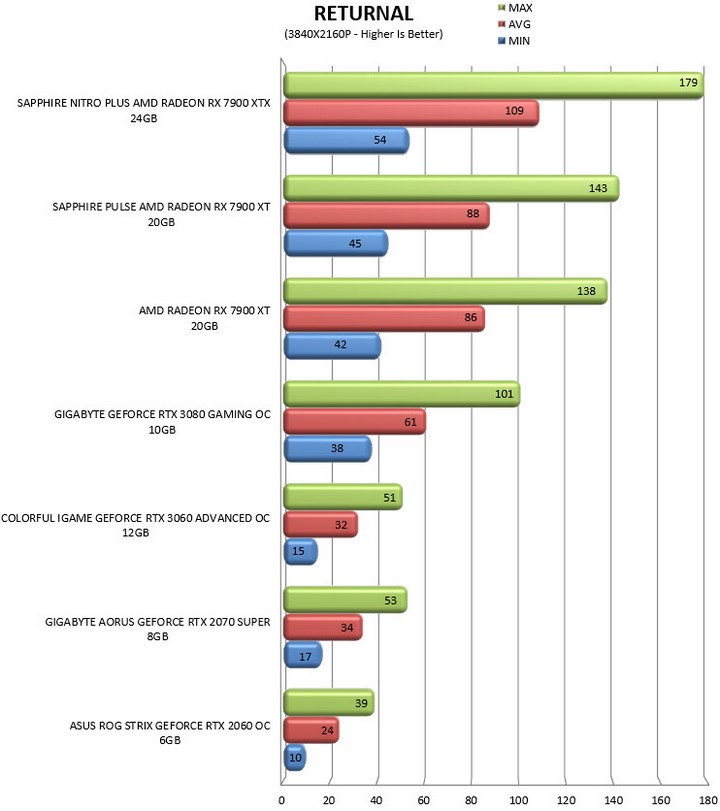
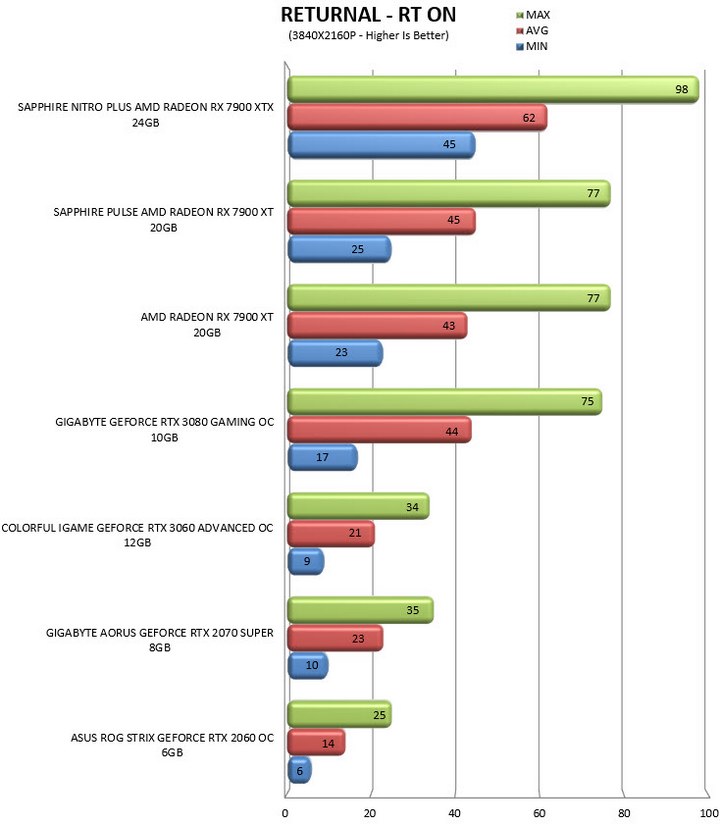
TEST RESULTS - OVERCLOCKING

Going to 3200MHz boost and 2700MHz memory clocks was very easy and once again I could probably go even higher (sp consider this as a rather safe OC).
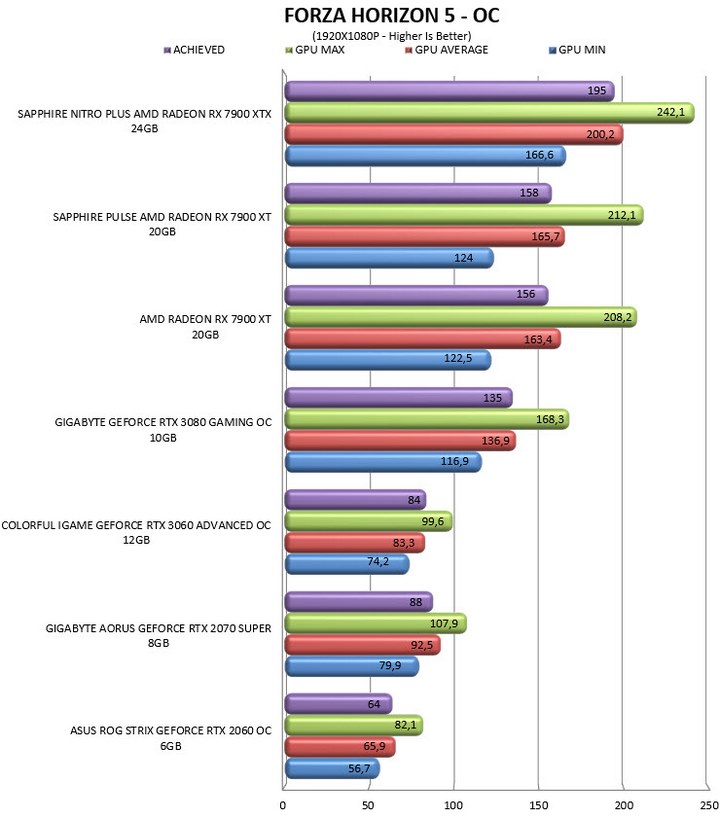



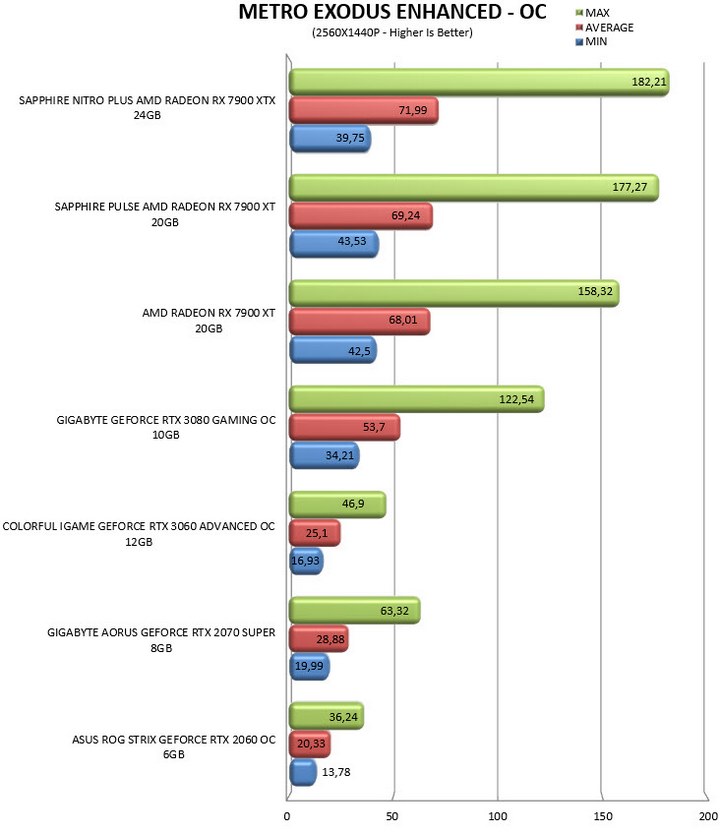

TEST RESULTS - POWER CONSUMPTION / TEMPERATURES / NOISE LEVELS

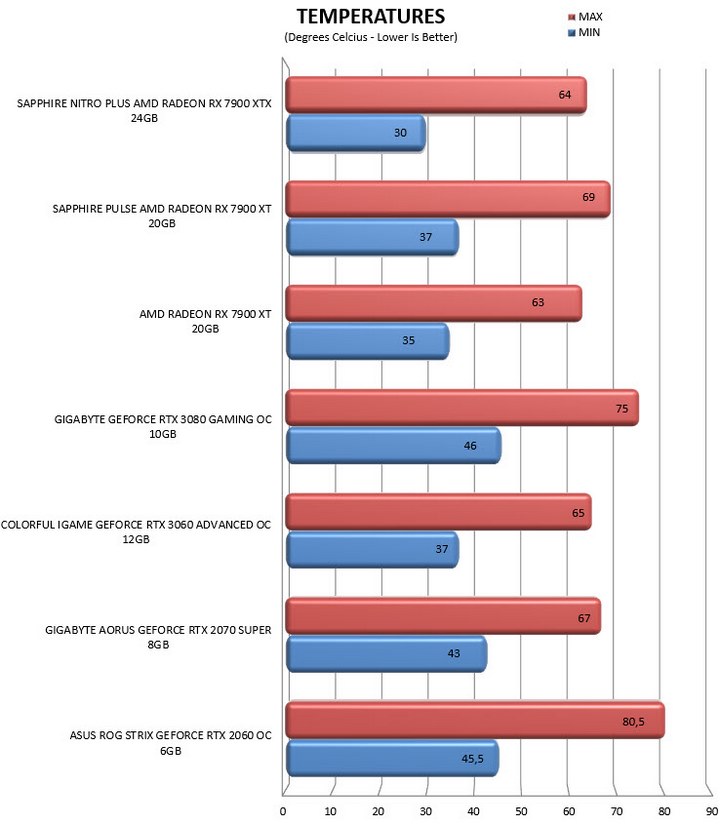
 ……………………….
……………………….
CONCLUSION
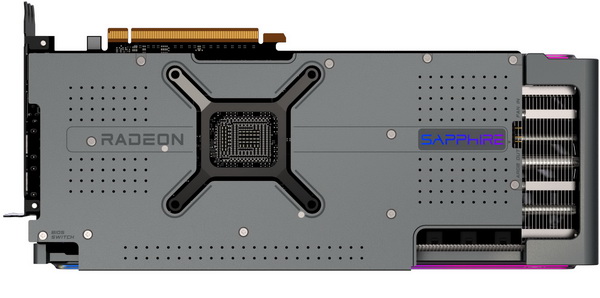
It may have taken me no less than 6 whole months to get a sample of the NITRO+ AMD Radeon RX 7900 XTX Vapor-X 24GB by SAPPHIRE but that’s also a blessing in disguise since now drivers are much more mature (and performance should be better overall). As always charts speak for themselves and so the NITRO+ AMD Radeon RX 7900 XTX Vapor-X 24GB is not only the fastest card in them to date but it’s also quite faster than the PULSE AMD Radeon RX 7900 XTX. Yes, it’s not the same across all games but for the most part you do see a 15-25% difference which may not seem like a lot at first but it’s actually quite a good number, especially if you game at 1600/2160p. Unfortunately, once again ray tracing performance is far from excellent and so I sincerely hope AMD further improves on that with their upcoming Radeon RX 8000 series. Power consumption is also a slight issue since during my tests I recorded up to 447W (not including overclocking) which is a rather considerable number (and quite higher than the reported 420W). Noise levels and temperatures on the other hand are very good so once again I guess we just can’t have it all. Last but not least the NITRO+ AMD Radeon RX 7900 XTX Vapor-X 24GB is a very good looking card thanks to both the top and bottom ARGB LED bars and the rear logo.
After several price cuts lately the NITRO+ AMD Radeon RX 7900 XTX Vapor-X 24GB by SAPPHIRE currently retails for USD1069.99 inside the USA (Amazon.com) and for 1207Euros inside the EU (Amazon.de) a price tag which is quite close to the announced MSRP by AMD for the stock model back in December. At the end of the day enthusiast-grade cards like the AMD Radeon RX 7900 XTX are among the top gamers can get their hands on today and thanks to SAPPHIRE things have gotten even better and yes their NITRO+ model may not be perfect but it’s clearly among the most complete solutions right now and for that it gets the Platinum Award.

PROS
- Excellent Build Quality (Materials / Backplate)
- Top Of The Charts Performance
- Very Good Overclocking Headroom
- Noise Levels & Temperatures
- 3 ARGB LED Zones
- Supported Technologies
- TRIXX Software
CONS
- Overall RT Performance
- Power Consumption
- Size (For Some)

 O-Sense
O-Sense





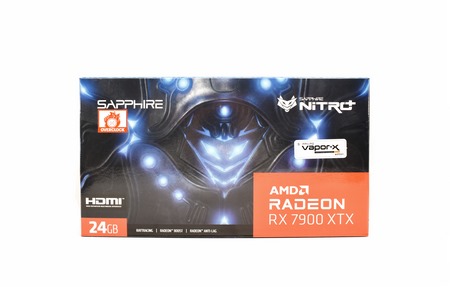
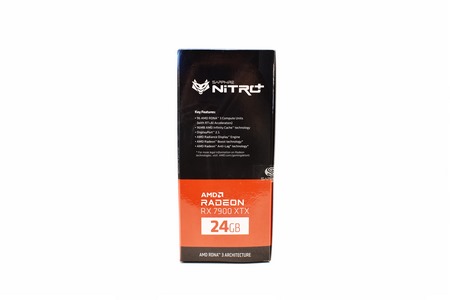
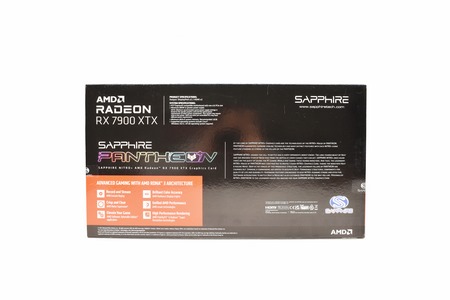
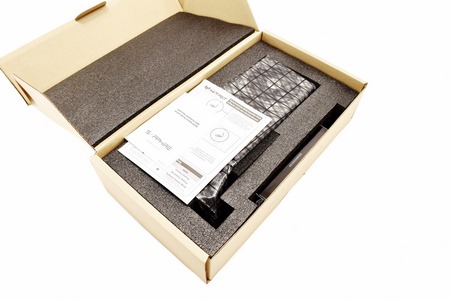

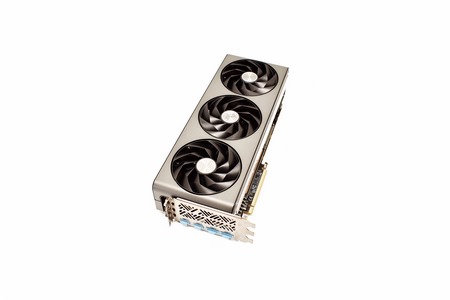
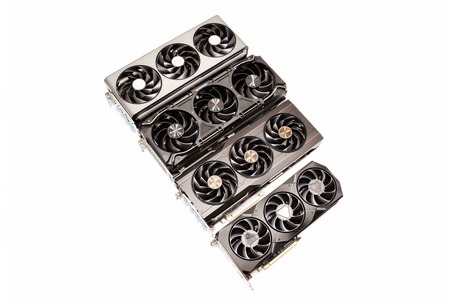





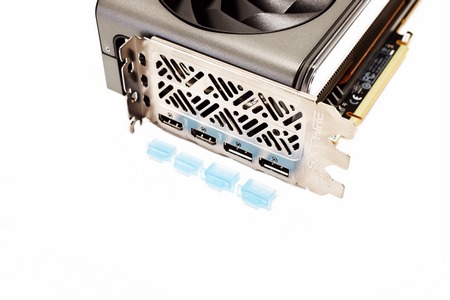

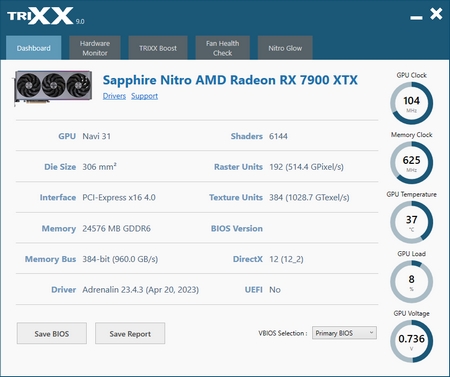
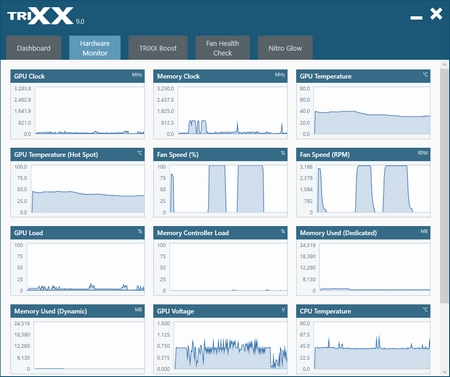
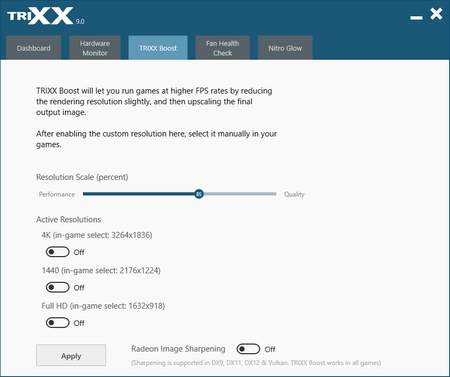

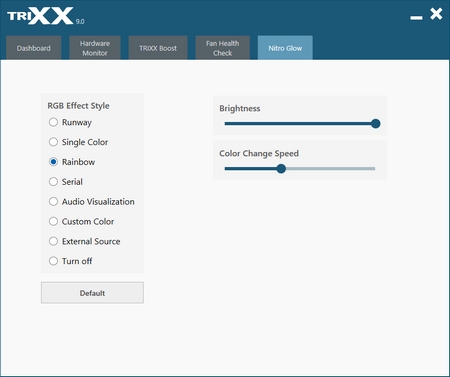


.png)

